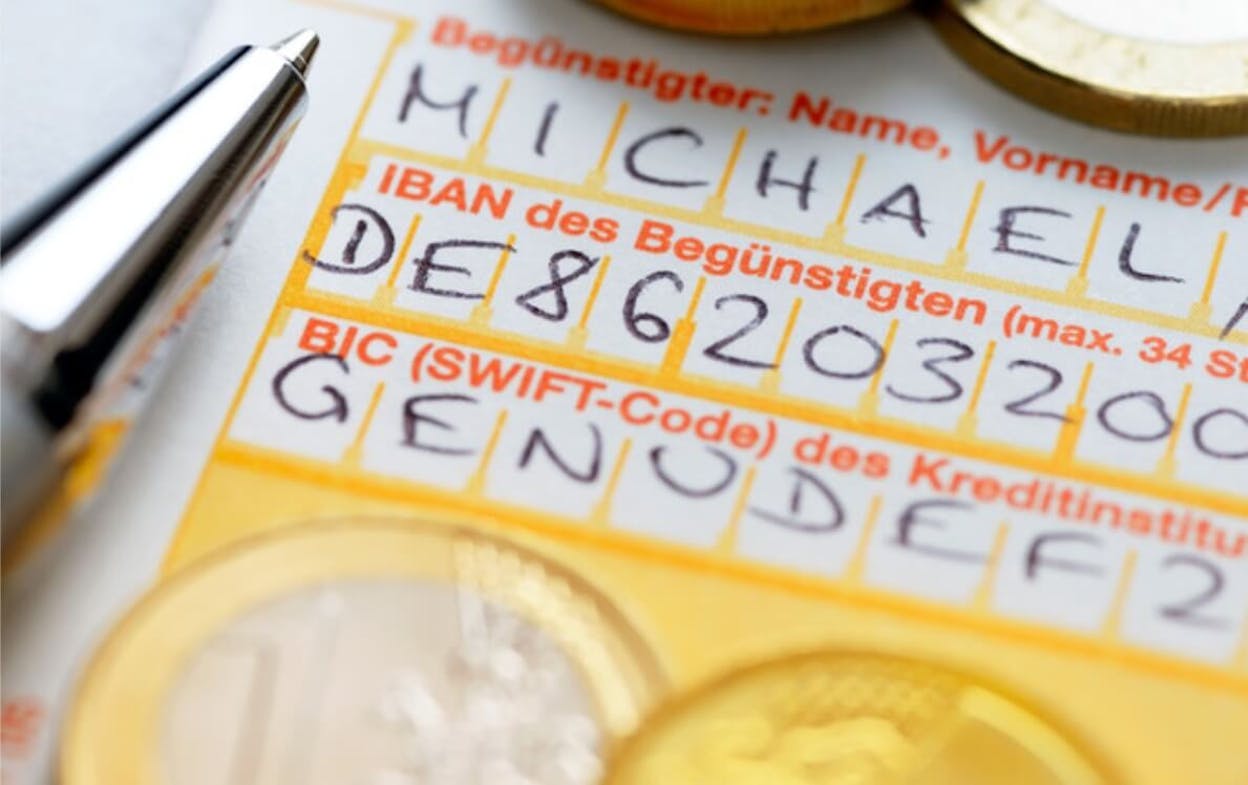What is an IBAN number? Your quickstart quide to international bank account numbers

You’ve likely seen the term IBAN before, but what exactly is it, and why is it essential for global transactions?
In this article, you’ll learn everything you need to know about IBAN numbers, how they work, their role in cross-border payments, and why understanding them can make your international transactions smoother and more secure.
Whether you’re sending or receiving money, knowing the function of an IBAN can save you time and avoid costly errors.
Table of contents
What is an IBAN number?
An IBAN (International Bank Account Number) is a standardized system for identifying bank accounts internationally. It’s designed to streamline and secure cross-border payments in the Single Euro Payments Area (SEPA), ensuring that money transfers between banks, especially international transactions, are processed accurately and efficiently. The IBAN consists of up to 34 alphanumeric characters, depending on the country.
The structure of an IBAN is as follows:
- Country code. The first two letters identify the country of the account (e.g., "ES" for Spain).
- Control digits. The next two digits are a security measure to validate the IBAN before a transfer is processed.
- Bank code. Following the check digits, the next set of characters identifies the bank.
- Branch code.
Customer account number. The remaining characters refer to the individual bank account number, making sure the payment reaches the correct account.

Is a BIC or SWIFT code the same as an IBAN?
No, a BIC (Bank Identifier Code) or SWIFT code (an acronym for Society for World Interbank Financial Telecommunication) is not the same as an IBAN, but they both play crucial roles in international transactions.
While an IBAN identifies an individual bank account in a specific country and ensures transfers reach the right account, a BIC or SWIFT code identifies and routes the payment through the correct bank.
A BIC or SWIFT code is an international standard for identifying banks and financial institutions globally. It typically consists of 8 or 11 characters:
- Bank Code. The first four characters identify the bank.
- Country Code. The next two letters represent the country of the bank.
- Location Code. The next two digits or letters represent the city or location of the bank.
- Branch Code. An optional three-character branch identifier (if omitted, it typically refers to the bank’s main office).
📚Further reading: What is a SWIFT/BIC code and what are the most popular Spanish banks’ SWIFT codes?
Origin of the IBAN number
The European Committee for Banking Standards (ECBS) adopted the IBAN system in 1997 as the international standard under the International Organization for Standardization (ISO) to improve the efficiency of cross-border payments. Before IBAN, international transfers were often subject to errors due to varying national systems and formats, leading to delays or failed payments.
The introduction of the Single Euro Payments Area (SEPA) in Europe further enhanced the importance of IBAN. SEPA standardized the format for euro-denominated payments, making it easier for businesses and individuals to conduct transactions within participating European countries. Since the adoption of SEPA, IBAN has become essential for payments within the eurozone, ensuring that cross-border payments are processed as smoothly as domestic ones.
In Europe, IBAN is a critical element in SEPA transfers, and its use has significantly reduced processing times and costs for cross-border payments. However, IBAN is not limited to Europe and is used in various other countries worldwide.
What countries use IBANs?
The IBAN system is used in over 80 countries worldwide, primarily in Europe but also in parts of the Middle East, the Caribbean, and some African countries. All European Union (EU) member states and countries within the European Economic Area (EEA), use IBAN as a standard for domestic and cross-border transactions.
Some of the key countries using IBAN include:
- European Union and Eurozone countries: France, Germany, Spain, Italy, Netherlands, etc.
- EEA countries: Norway, Iceland, Liechtenstein.
- Non-EU countries: Switzerland, Turkey, Saudi Arabia, and others.
IBAN calculator
To ensure that you enter the correct IBAN for a transaction, many banks offer IBAN calculators or validation tools. These tools help you verify the structure of an IBAN or calculate the IBAN based on your bank account number and bank details. By entering the necessary information, you can generate the correct IBAN, ensuring smooth payment processing.
For example, BBVA provides a simple-to-use IBAN calculator where you can validate or calculate an IBAN by entering your account information.
These calculators can be especially useful for cross-border payments or setting up recurring transfers to international accounts. Ensuring you have the correct IBAN in advance reduces the risk of delays, additional fees, or failed transactions.
Wrapping up
Now that you understand how IBANs work and how they differ from BIC and SWIFT codes, you can avoid common errors that lead to delays or extra fees. Before making your next international transfer, use an IBAN calculator to validate your numbers and ensure a seamless process. Whether you're managing personal payments or running a business, this knowledge will empower you to handle cross-border transactions with confidence.
🎓Find more definitions in our payment industry glossary.

Alexis Damen
Alexis Damen is a former Shopify merchant turned content marketer. Here, she breaks down complex topics about payments, e-commerce, and retail to help you succeed (with MONEI as your payments partner, of course).


